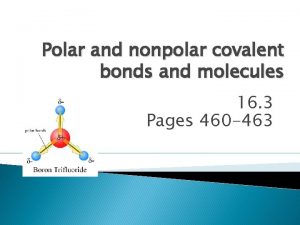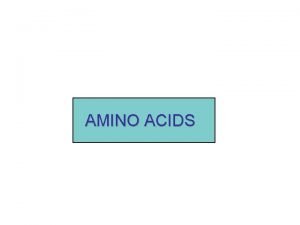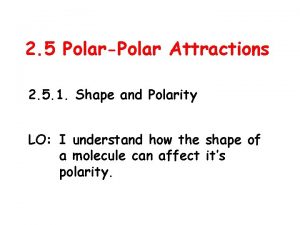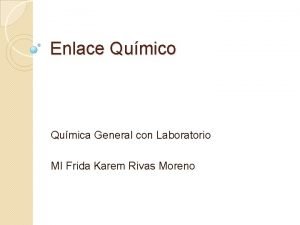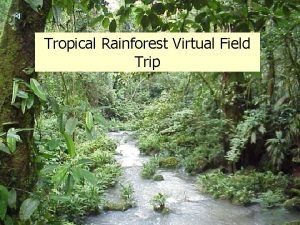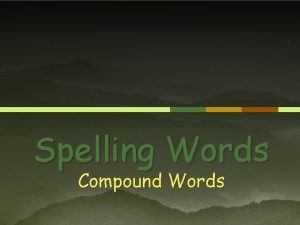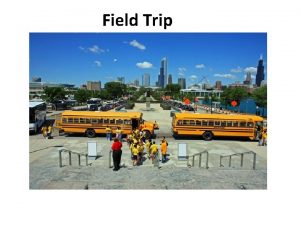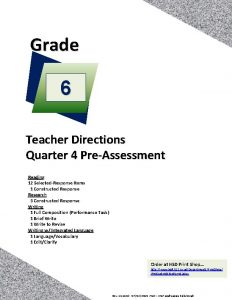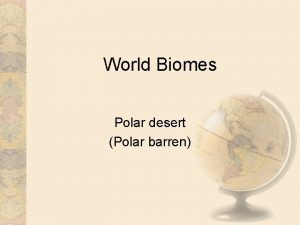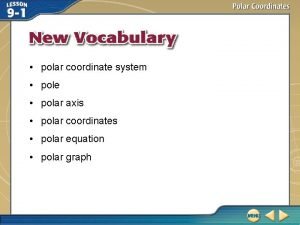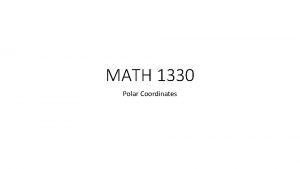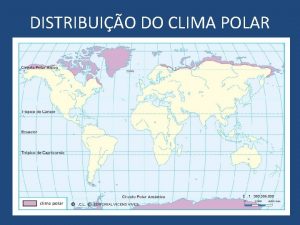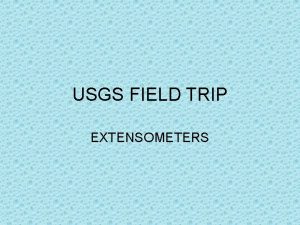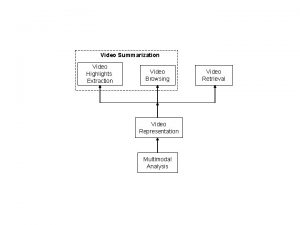Video Field Trip Polar Weather Take a field


















- Slides: 18

Video Field Trip: Polar Weather Take a field trip to the North and South Poles with Discovery Channel. Answer the following questions after watching the video. 1. Why is Antarctica technically called a desert? 2. What would happen to the ocean if the ice shelves around Antarctica melted?

Factors that Affect Climate Chapter 21, Section 1

Latitude • As latitude increases, the intensity of solar energy decreases • Near the equator, the sun’s energy strikes the planet at nearly right angles, therefore the sun’s ray’s are more intense here • Tropical Zone – region between 23. 5º north and 23. 5º south of the equator; sun’s rays are most intense; generally warm year-round • Temperate Zone – region located between 23. 5º and 66. 5º north and south of the equator; sun’s rays strike Earth at a smaller angle; hot summers and cold winters • Polar Zone – the region between 66. 5º north and south of the equator and the poles; sun’s rays strike at a very low angle; experience cold temperatures year-round

Concept Check • Compare and contrast tropical zones, temperate zones, and polar zones in terms of location and the intensity of solar radiation that each receives.

Elevation • Air temperature decreases with elevation by an average of ~6. 5º every 1000 meters • The higher the elevation is, the colder the climate • The elevation of an area also determines the amount of precipitation it receives

Influence of Elevation on Climate

Concept Check • How does elevation affect climate? • The higher the elevation, the colder the air and therefore, the colder the climate.

Topography • Topographic features such as mountains play an important role in the amount of precipitation that falls over an area • Heavy precipitation often falls on the windward side of mountains • By the time the air reaches the leeward side, much of the moisture is lost (rain shadow) • Rain shadows can extend for hundreds of kilometers downwind of a mountain range

The Rain Shadow Effect

Concept Check • How does a mountain range affect climate? • Windward side: humid air moves up the mountain’s slopes and cools to form clouds that produce precipitation. • Leeward side: the air is warm and very dry.

Water Bodies • Large bodies of water such as lakes and oceans have an important effect on the temperature of an area because the temperature of the water body influences the temperature of the air above it • Places downwind of a large body of water generally have cooler summers and milder winters than places at the same latitude that are farther inland

Concept Check • How do large bodies of water affect climate? • Places downwind of a large body of water generally have milder seasons than places farther inland at the same latitude.

Atmospheric Circulation • Global winds are another factor that influences climate because they distribute heat and moisture around Earth • Winds are constantly moving warm air toward the poles and cool air toward the equator • The low-pressure zones at the equator and subpolar regions lead to the formation of clouds and precipitation

Atmospheric Circulation

Concept Check • What effect do global winds have on climate? • They move heat and moisture around Earth.

Vegetation • The types of plants that grow in a region depend on climate and affect climate • Vegetation can affect both temperature and precipitation patterns in an area • Vegetation influences how much of the sun’s energy is absorbed and how quickly this energy is released (influences temperature) • During a process called transpiration, plants release water vapor from their leaves into the air (influences precipitation)

Concept Check • Describe different ways in which vegetation affects climate. • It influences how much of the sun’s energy is absorbed and released, thereby affecting temperature. Plants release water vapor and influence regional precipitation patterns.

Assignment • Read Chapter 21, Section 1 (pg. 588 -591) • Do Chapter 21 Assessment #1 -32 (pg. 609610) • For Section 1: #’s 1, 6, 7, 11 -13, 21, 22
 Trip trap trip trap over my bridge
Trip trap trip trap over my bridge Polar and non polar
Polar and non polar Tipos de redes cristalinas
Tipos de redes cristalinas Arginine essential
Arginine essential Polar polar attractions
Polar polar attractions Difference between polar and nonpolar dielectrics
Difference between polar and nonpolar dielectrics Enlace dativo
Enlace dativo Sequencers and connectors
Sequencers and connectors Take a bus or take a train
Take a bus or take a train Rainforest virtual field trip
Rainforest virtual field trip Is field trip a compound word
Is field trip a compound word Place/location/destination plan a
Place/location/destination plan a School trip definition
School trip definition Be vape free virtual field trip
Be vape free virtual field trip Westward expansion virtual field trip
Westward expansion virtual field trip Field trip by aditi sriram
Field trip by aditi sriram Witch
Witch Shakespeare virtual field trip
Shakespeare virtual field trip What is deposition? *
What is deposition? *

